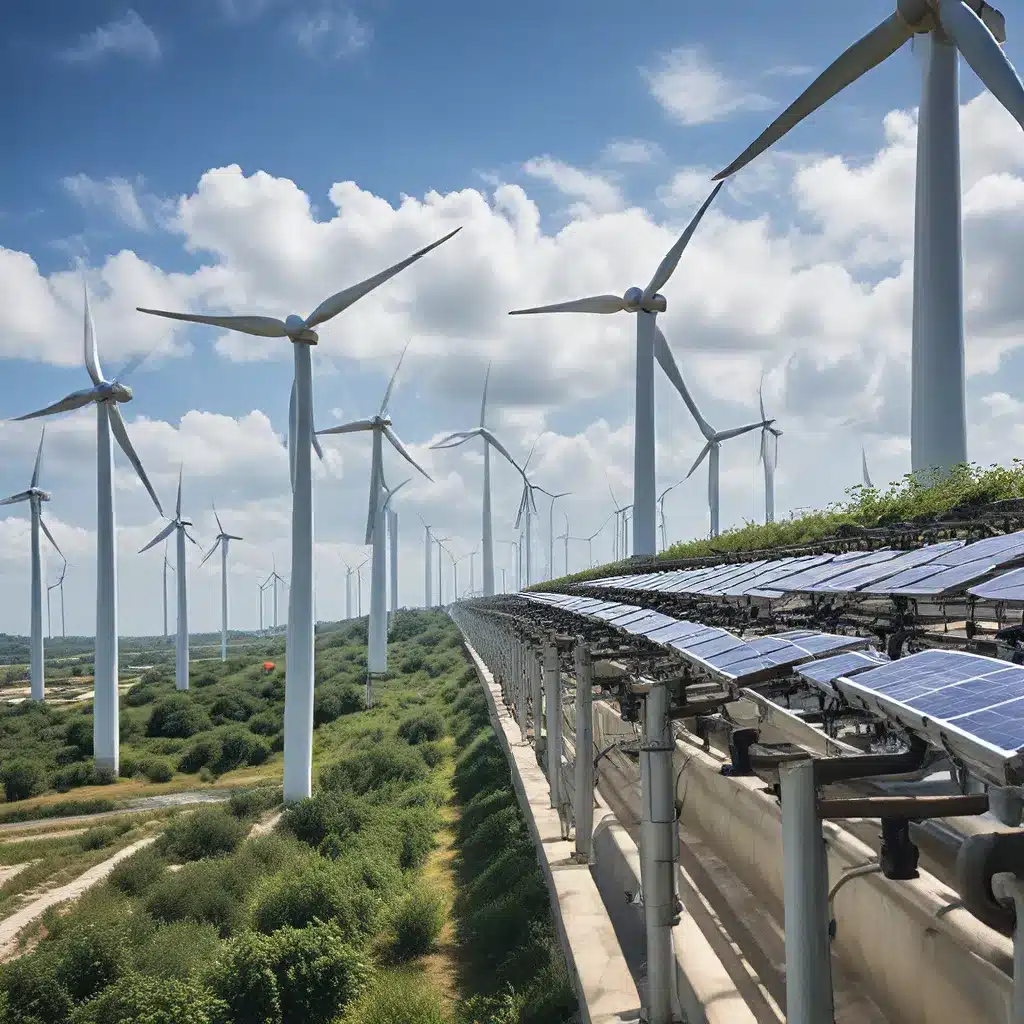
The Evolution of Predictive Maintenance
Predictive maintenance has emerged as a transformative approach to optimizing the performance and lifespan of equipment in various industries, including the renewable energy sector. By leveraging a sensor-driven, data-centric methodology, predictive maintenance strategies can identify and address issues as they occur, as well as predict the potential future state of equipment, reducing the risk of failures and unplanned downtime.
Traditionally, maintenance strategies have fallen into three primary categories: reactive maintenance, which fixes failures when they occur; preventive maintenance, which relies on a predefined schedule to identify faults; and predictive maintenance, which is proactive in nature. Predictive maintenance builds upon the foundations of condition-based monitoring, continuously assessing the health of equipment in real-time through the collection and analysis of data from a network of sensors.
Predictive maintenance leverages advanced analytical tools, such as machine learning (ML) and artificial intelligence (AI), to identify anomalies and provide early warnings of potential problems. By monitoring factors like sound, ultrasonic acoustics, temperature, thermal conditions, lubrication, and vibration analysis, predictive maintenance solutions can detect subtle changes that may indicate underlying issues, enabling timely intervention and optimization of maintenance schedules.
Sensor Networks and IoT in Predictive Maintenance
The proliferation of sensor networks and the Internet of Things (IoT) has been a driving force behind the widespread adoption of predictive maintenance strategies. Connected sensors embedded within machinery and equipment gather real-time data, which is then collected and analyzed at the edge or in the cloud using AI-enabled enterprise asset management (EAM) or computerized maintenance management systems (CMMS).
The integration of IoT and predictive analytics allows for the continuous monitoring of asset health, enabling maintenance teams to make data-driven decisions and optimize their workflows. As more data is collected and analyzed, the accuracy of the machine learning algorithms used in predictive maintenance solutions improves, leading to increasingly reliable predictions about the future condition of equipment.
Predictive Maintenance in Renewable Energy Systems
The renewable energy sector, with its heavy reliance on complex and capital-intensive assets such as wind turbines, solar photovoltaic (PV) systems, and hydropower facilities, has been a prime candidate for the implementation of sensor-driven predictive maintenance strategies.
Wind farms, for example, can benefit significantly from predictive maintenance by anticipating potential equipment faults and failures, reducing maintenance and operating costs, and improving the overall performance and reliability of the system. Predictive maintenance in wind farms can help identify points or brake failures, track deformations, and improve the safety of critical components like rotors, ultimately preventing service interruptions and ensuring uninterrupted power generation.
Similarly, solar PV systems can leverage predictive maintenance to optimize asset performance, minimize energy usage and waste, and enhance the lifetime reliability and durability of the equipment. By monitoring factors like module degradation, inverter efficiency, and system-level performance, predictive maintenance can help identify and address issues before they lead to significant downtime or reduced energy output.
In the hydropower sector, predictive maintenance can play a crucial role in managing the health and availability of turbines, generators, and other critical components. By continuously monitoring the condition of these assets and predicting potential failures, maintenance teams can optimize their schedules, reduce unplanned downtime, and ensure the resilience and sustainability of the hydropower fleet.
Overcoming Barriers to Predictive Maintenance Adoption
While the benefits of sensor-driven predictive maintenance are well-documented, there are still some barriers to widespread adoption, particularly in the renewable energy industry. One of the primary challenges is the initial investment required to implement the necessary IoT infrastructure, data management systems, and advanced analytics capabilities.
Assessing the criticality and cost of failure of individual assets is also a crucial step in determining whether predictive maintenance is the appropriate strategy. For low-cost assets with readily available parts, other maintenance approaches, such as reactive or preventive maintenance, may be more suitable.
To overcome these barriers, renewable energy organizations are increasingly recognizing the long-term competitive and financial advantages of a well-executed predictive maintenance strategy. By leveraging the latest advancements in IoT, big data, and AI/ML, they can optimize asset performance, reduce maintenance costs, and improve the overall reliability and sustainability of their renewable energy systems.
The Future of Predictive Maintenance in Renewable Energy
As the renewable energy sector continues to evolve, the integration of sensor networks, IoT, and predictive analytics will become increasingly crucial for maintaining a competitive edge and ensuring the resilience of energy infrastructure.
Sensor-driven predictive maintenance will play a pivotal role in maximizing asset performance, extending asset lifecycles, minimizing operational costs, and reducing downtime across the renewable energy landscape. The growing availability of connected sensors, the proliferation of data, and the advancements in AI/ML algorithms will further enhance the capabilities of predictive maintenance solutions, enabling renewable energy providers to make more informed decisions and optimize their operations.
Moreover, the integration of predictive maintenance with other smart grid technologies, such as renewable energy forecasting, demand response, and grid optimization, will create a holistic approach to managing the reliability, efficiency, and sustainability of renewable energy systems. This convergence of cutting-edge technologies will be essential in addressing the dynamic challenges faced by the renewable energy industry, from managing variable generation to optimizing energy storage and grid integration.
In conclusion, sensor-driven predictive maintenance is poised to play a pivotal role in the future of renewable energy systems, empowering organizations to maximize asset performance, enhance operational efficiency, and ensure the long-term sustainability of their energy infrastructure. As the industry continues to evolve, the adoption of these advanced maintenance strategies will be a key differentiator for those seeking to remain competitive and adaptable in the dynamic renewable energy landscape.